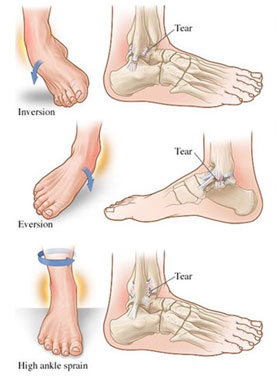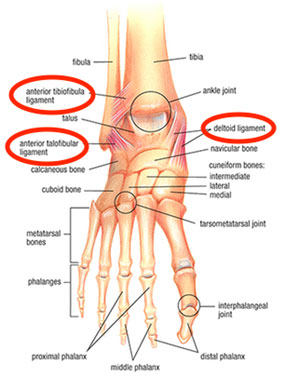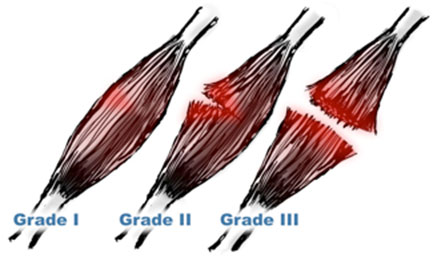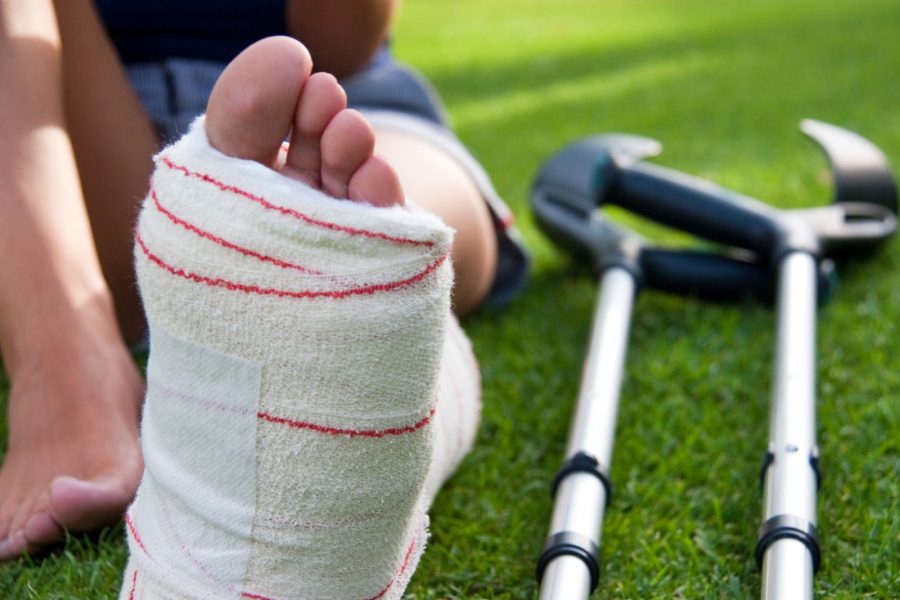Ankle sprains are the most common injury in soccer, accounting for nearly 20% of all soccer injuries. Understanding ankle sprains, including preventi
Ankle sprains are the most common injury in soccer, accounting for nearly 20% of all soccer injuries. Understanding ankle sprains, including prevention and rehabilitation strategies, can be incredibly helpful in minimizing the risk of being sidelined by an ankle sprain.


A sprain occurs when a ligament, which connects bone to bone, is stretched or stressed beyond its capacity, resulting in the tearing of fibers. Sprains occur at the lateral (outside) ankle, medial (inside) ankle, or between the tibia and fibula, known as a high ankle sprain.
A lateral ankle sprain is the most common type of ankle sprain and often involves the Anterior Talofibular Ligament (ATFL). This results from excessive inversion and plantarflexion (pointing toes down and turning inward). For example, this can happen if your ankle “rolls” when landing on another player’s foot or by stepping into a divot while running. The pain, tenderness, or bruising is primarily on the outside of the ankle.
If the injury occurs to the medial side of the ankle, the sprain likely affects the Deltoid Ligament and occurs when the ankle is forced into excessive eversion (rotating foot outward). For example, when two soccer players approach a ball, each connecting and driving the ball toward each other, the player with more force drives the ball through, while the other player’s foot gives way. If the ankle is forced beyond its eversion range of motion, then the medial ankle ligaments can become injured.
A High Ankle sprain involves the ligaments that hold the tibia and fibula together, and often occurs from extreme dorsiflexion (toes upward) and/or rotation, such as a plant-and-twist action, which forces the lower tibia and fibula bones to pull apart slightly, stressing the structures that hold them together. Pain may be located deep in the ankle or lower leg. A high ankle sprain requires a longer healing time compared to the other types of sprains.
Sprains are classified by the severity of tissue damage. Click here to see characteristics of sprains (Grades I, II, III).

Prevention
Some risk factors that make soccer athletes susceptible to experiencing ankle sprains are preventable! You cannot avoid landing on another player’s foot, stepping into a divot, or direct contact, because such actions are the nature of the sport. However, stronger muscles throughout the lower extremity as well as a well-trained proprioceptive system will help provide a more effective (automatic) correction back to neutral when the ankle is moving toward its limit of motion.
Strength and control at the hip and core are massively important for controlling mechanics all the way down to the ankle. Therefore, it is critical to work on dynamic stability of the gluteals, hip rotators, hamstrings, quadriceps, calf, and ankle inverter/everter muscles to properly maintain neutral mechanics in soccer-specific activities. Performing single leg balance activities on an unstable surface and practicing quick footwork and ball control are effective strategies to achieve good functional strength and proprioception.
In order to reduce the potential for suffering an ankle sprain on the soccer field, it is important to participate in a comprehensive training program, incorporating total body strengthening, utilizing multiple planes of motion, and practicing in dynamic environments. Emphasize hip and core stability as well as proprioceptive balance and agility exercises to round out the training program and you will be more equipped to manage awkward and unexpected forces across the ankle.
Part II of this piece can be found here. Details on what to do to recover from an ankle injury in the event you are diagnosed with one.
